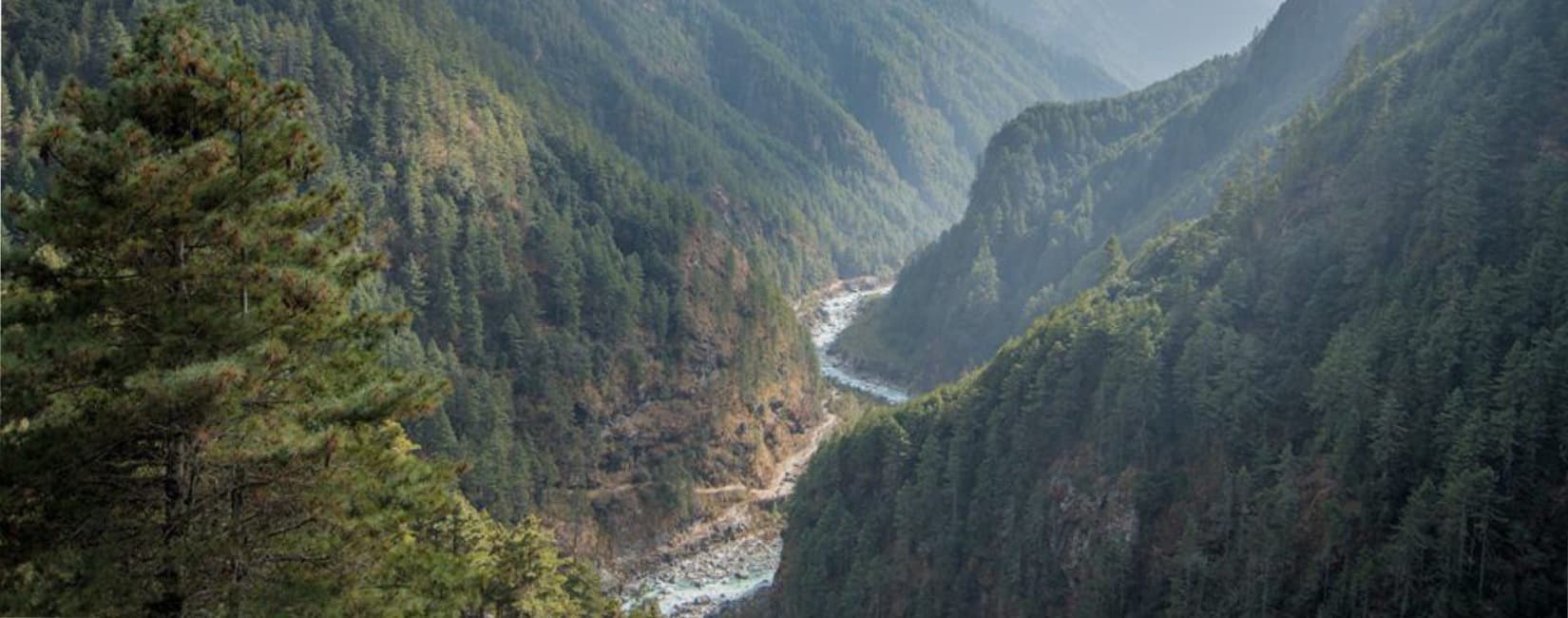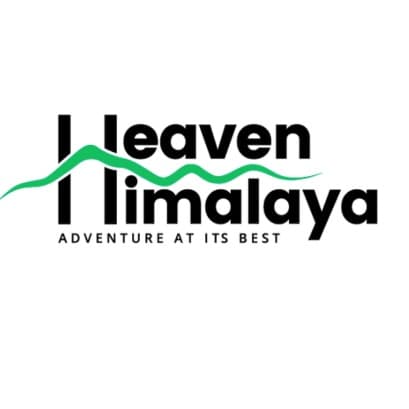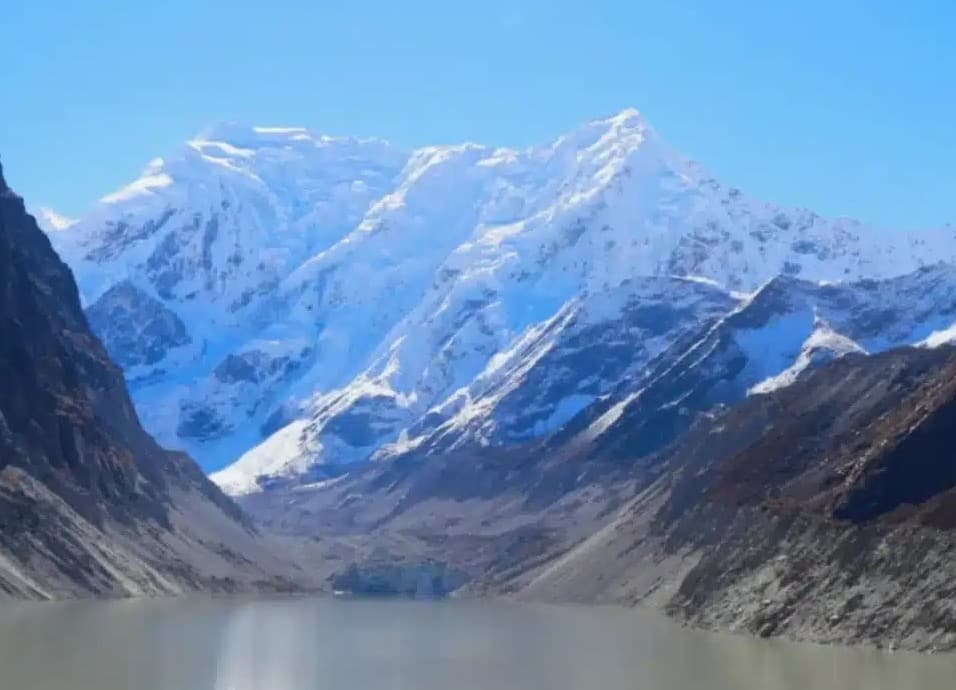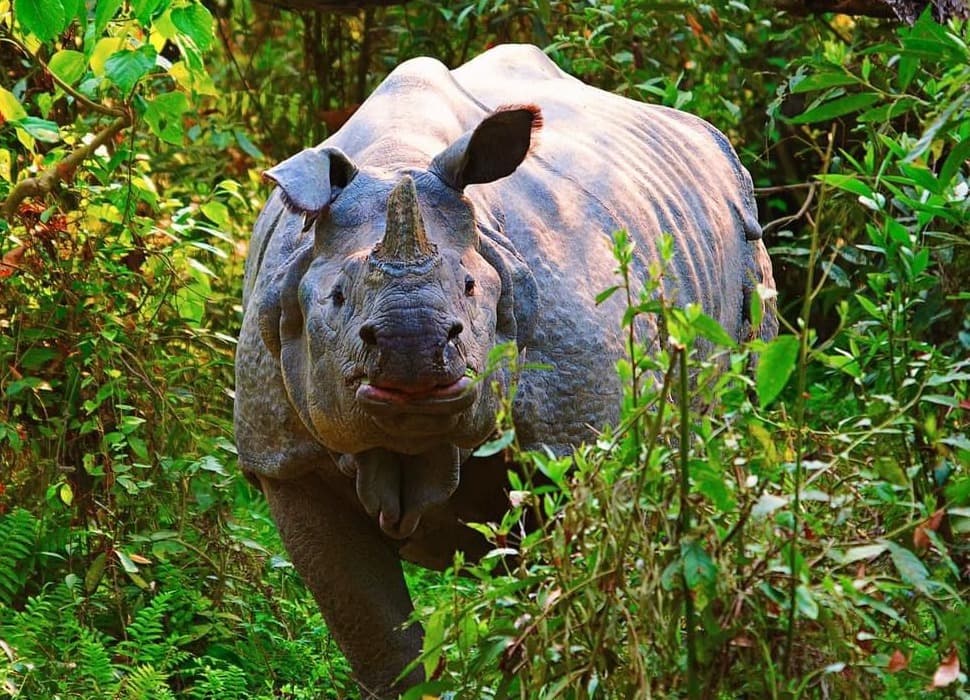Last Updated on Sep 2025
Now, the Everest Base Camp Trek with Kids is possible, and sharing this involvement with your children will make your journey more meaningful. Having kids does not mean you must stop or delay your dream of reaching Everest Base Camp. Families from various countries make this trip every year with children of all ages. There was even a family who brought their two-year-old child, and with the right care and support, the little one reached Base Camp.
Today, there are family-friendly Everest treks. As more families join this adventure, some trekking companies offer discounts of 5–10% for children under 12, and in some cases, even more. The trekking route to Everest Base Camp is well-prepared for families. Tea houses along the way give warmth and comfort, medical help is available when needed, and guides understand how to walk slowly with children. Many of these guides are parents themselves, so they know how to make kids feel safe, happy, and well-acclimatized to the mountains.
This trek also gives children more than just physical exercise. The Everest Base Camp Trek helps kids learn about Sherpa culture, the great Himalayas, and the strength of teamwork. Every small challenge builds their confidence. Along the way, they also meet local people and sometimes other families, which makes the journey even richer.
The Everest region is becoming friendlier for families. Tea houses often prepare meals that kids enjoy and have spaces for rest. To make it easier, the Everest Base Camp family trek itinerary has been made a little longer, usually 14 to 19 days instead of the normal 12 to 14. This gives families extra time to rest and adjust to the high altitude.
In the end, it is not only about reaching Everest Base Camp with your kids. It is about the memories created step by step. Whether you are carrying your toddler or walking side by side with your older child, every moment becomes special. Such a trek helps children build confidence, teaches patience, and shows them that with preparation and a positive spirit, even big dreams like reaching Everest can come true.
Is Everest Base Camp Safe for Kids?
Yes, the Everest Base Camp trek can be safe and rewarding for children if families prepare and plan it well. The main things to consider are the altitude, weather, and long walking days, which can make the trek difficult. Everest Base Camp is very high about 5,364 meters (17,600 feet). At this height, kids can feel altitude sickness, which is a serious disorder. That is why families need to be extra careful, walk slowly, and make sure their kids rest and adjust to the height.
Even though the trek sounds very challenging, many families have already done it with their children. For example, on March 22, 2024, Siddhi Mishra from Bhopal, India, became the youngest to reach Everest Base Camp at just 2 years, 11 months, and 15 days old. She went with her parents and a guide, which showed the world that even very young kids can reach Base Camp if they are healthy, supported, and carefully monitored.
Some trekking companies provide guides and porters who are experienced in taking care of relations. They walk slowly, carry heavy bags, and make the trek more enjoyable and safe for parents and kids.
Now, you may read on the internet that the “best age” for kids to trek is 5, 10, or 12. Different people have different opinions, and this can confuse parents. But the truth is simple: age is not the only factor. The real question is, is your child physically fit, mentally ready, and excited about outdoor adventures? If yes, then your child has a good chance to enjoy this journey.
Usually, children around 10 years old find the trek easier because they can walk longer and handle the cold better. But there have been many exceptions, too. For example:
- Gus Man, who completed the trek at the age of 7.
- Maya Bristow, who trekked at the age of 6?
- Siddhi Mishra, only 2 years and 11 months old.
- Carter Dallas from Scotland, who was just 2 years old when he reached Base Camp
These stories show that with the right training, proper preparation, and strong family support, kids of dissimilar ages can complete the trek. It is not only about reaching Base Camp, but also about enjoying the journey together, learning patience, and building strong family memories.
What is the Best Time to Trek to Everest Base Camp with Families?
When we think about trekking to Everest Base Camp with families, the best time is usually in spring or autumn. These two seasons are general because the weather is stable, the sky is clear, and the temperature is comfortable for both adults and kids.
Spring (March to May) is one of the best times to go. The days are mild, with temperatures around 50–60°F at lower places on the trail. Kids can walk in lighter clothes during the day, which makes the trek easier for them. During spring, flowers bloom along the paths, and the mountains look very clear before the summer rains start. Families enjoy this time because it feels colorful, fresh, and full of energy.
Autumn (September to November) is another countless seasons. The daytime temperatures are around 40–50°F in lower areas, which is not too hot or too cold. The skies are typically clear, so you can see amazing views of Everest and other peaks. The paths are also dry after the summer rains, so it is safer and less slippery. Autumn also brings lovely colors to the trails, which makes walking even more enjoyable for families.
Now, if we think about winter (December to February) or monsoon (June to August), these times are not very good for children. Winter is extremely cold, and even though adults can manage with thick clothes, it can be hard for kids to handle the freezing nights. Monsoon is also risky because of heavy rain, slippery paths, and even landslides. On top of that, the clouds often block the mountain views, which makes the trek less fun for families.
So, if you are planning the trek with kids, the safe and enjoyable choices are spring and autumn. These seasons have the right mix of good weather, comfortable temperatures, and beautiful nature.
When families plan a big journey like this, it is helpful to go with an experienced local trekking company. A company like Heaven Himalaya can make things much easier for you. They help with travel, lodges, guides, and safety, so families can focus more on enjoying the adventure and less on worrying about the details.
How to Prepare Kids for the Everest Base Camp Trek?
Trekking to Everest Base Camp is already a big dream for many people, but when the plan includes children, the preparation becomes even more special. Kids can definitely walk this trail if they are ready both physically and mentally. The journey takes you to high mountains, cold places, and many hours of walking each day. So, before families set out, it is important to think carefully about the right age, fitness level, gear, and even how to make the experience more fun. A trekking company like Haven Himalaya, which has experience in arranging family treks, often reminds parents that success depends on careful preparation rather than rushing into the adventure.
Age and Physical Readiness
When it comes to age, most children around 10 to 12 years old can manage the Everest Base Camp trek if they already enjoy hiking. This does not mean all kids of this age are ready; it depends on how much walking and outdoor activity they have done before. Children should be comfortable walking for several hours on uneven paths, going uphill and downhill. Parents can test this at home by taking their kids on long day hikes of 5–7 hours. If the child can handle those hikes without becoming overly tired or frustrated, then there is a good chance they can enjoy the longer trek in Nepal.
Physical Preparation
The trail to Everest Base Camp is not only about walking; it also demands stamina and energy. Training should ideally begin 6 to 8 months before the trip. A good start is to go on weekend hikes as a family, slowly increasing both distance and difficulty. To build endurance, children can also do fun activities like swimming, cycling, or even dancing. These exercises are enjoyable and help strengthen the heart and lungs. Another useful idea is to let kids carry a light backpack during practice hikes. Over time, a few more items can be added, so they slowly get used to the feeling of carrying weight. Making training fun is the key. Rock climbing walls, small obstacle courses, or even family competitions can keep them interested while still preparing their bodies for the real trek.
Altitude Awareness and Acclimatization
Altitude is one of the biggest challenges of the Everest Base Camp trek. For adults, it can be tough, and for children, it requires even more attention. Parents need to explain altitude in very simple words so that kids can tell if they start feeling unwell. During the trek, it is wise to include more acclimatization days than an adult-only group would normally take. Daily altitude gain should not be more than 300–400 meters, and the “climb high, sleep low” method should be followed. This means you walk up to a higher place during the day but return to sleep at a lower level, which helps the body adjust. Families should always stay flexible, ready to rest longer if the child needs it.
Equipment and Clothing
Good gear can make the difference between comfort and discomfort on the trail. Children need properly fitted clothes with many warm layers that can be removed or added depending on the weather. Waterproof jackets, fleece, thermals, and warm hats are all essential. Hiking boots are extremely important and must be broken in for at least two months before the trek. Kids often get wet or dirty while walking, so extra clothes should be packed as well. Along with clothes, families should bring sleeping bags rated for cold nights, small headlamps, sun protection items like hats and sunscreen, and a light backpack that fits the child’s body properly. The backpack should never be too heavy.
Health and Medical Preparation
Before the trek, it is a good idea to visit a doctor for a full health check-up. The doctor can suggest any needed vaccinations and discuss altitude medication if necessary. Families should also prepare a complete first-aid kit including bandages, blister care, fever reducers suitable for children, and any prescribed medicines. A wilderness first aid course can be useful for at least one parent. Insurance is also very important. Families should make sure their policy includes emergency evacuation because helicopters are sometimes needed in the Everest region. Haven Himalaya often advises travelers to have this sorted out early, so no time is wasted if an emergency comes up.
Mental and Educational Preparation
Preparing for Everest Base Camp is not only about the body; it is also about the mind. Children may feel homesick or tired after long walking days, so it helps to talk about the trek openly before leaving. Parents can show pictures and videos of the trail, the villages, and the people living in the Everest region. Learning a few basic Nepali words can be fun and also makes children feel more connected. Starting a trek journal is another idea, where kids can write about their training and later about their daily experiences. This way, they stay excited, and the preparation itself becomes a part of the adventure.
Nutrition and Dietary Preparation
Food is the fuel for trekking. In the months before the trip, kids can slowly start eating healthy meals that give energy. They should also get used to drinking plenty of water, as hydration is very important in high places. During the trek, children may not feel hungry at higher altitudes, but they must eat small meals often. Parents can bring familiar snacks such as nuts, chocolate, protein bars, and dried fruits, which can keep the kids happy and energized. It also helps to introduce Nepali food before the trip, so children are not surprised when they eat dal bhat (lentils and rice) or other local meals on the trail.
Trek Planning and Logistics
Families should allow extra time for the trek compared to adults traveling alone. A plan of at least 14 to 16 days is recommended. This slower pace gives space for acclimatization, weather delays, or even small illnesses. Teahouses along the route can be booked in advance to make sure children have comfortable places to sleep. Hiring an extra porter is often a smart choice, so kids do not need to carry much weight. A company like Haven Himalaya can help arrange guides who have experience with children, making the trek smoother and more enjoyable for the whole family.
Choosing a Family-Friendly Itinerary
The regular Everest Base Camp itinerary is often too fast for children. A better option is to create a child-friendly route with shorter days, more rest stops, and extra acclimatization. It is important not to rush. If kids are allowed to move slowly, take breaks, and enjoy the villages along the way, the trek becomes more fun. Parents should also keep the plan flexible, ready to add days if needed or even to turn back if conditions are not right. The goal is not just to reach Base Camp but to like the journey as a family.
Making the Experience Fun
Kids are more likely to enjoy the trek if it feels like an adventure rather than just hard work. Families can play games along the way, such as spotting different birds or flowers. Small rewards for reaching certain points can keep children motivated. Photography, journaling, and even stargazing at night make the trek magical. Parents can also tell stories about Everest climbers or share local myths and legends from the Sherpa culture. These activities help children connect with nature and culture, making the journey more than just walking.
Safety and Emergency Preparedness
Finally, safety should always come first. A slow pace, extra acclimatization, and plenty of hydration are essential for kids. Parents should watch closely for signs of altitude sickness such as headaches, nausea, or dizziness. Having a trained guide is very helpful, and many companies in Nepal, including Heaven Himalaya, provide guides who know how to handle emergencies. Carrying a local SIM card is a smart idea to stay connected, and families should always keep track of the weather before starting each day. Travel insurance with helicopter evacuation is a must. Being prepared for every situation allows parents to relax more and enjoy the trek alongside their children.
How Difficult Is the Everest Base Camp Trek with Kids?
Trekking to Everest Base Camp is already a tough journey for adults. The high altitude, long walking days, and basic facilities along the way can make it quite demanding. When children join the trek, the challenge becomes a little more challenging, not because kids cannot do it, but because their bodies and minds need extra care. Families who plan this journey must prepare well, move slowly, and be ready to make changes whenever needed. With the right approach, the trek can still be a rewarding and memorable experience for both parents and children.
Altitude Challenges
The biggest challenge on the Everest Base Camp trek is altitude. Even healthy adults can feel the effects of thinner air as they go higher, so, naturally, children might struggle more. At high altitude, the body takes time to adjust, and symptoms like headaches, nausea, or dizziness can appear. Kids may not always explain exactly how they feel, which means parents have to watch them carefully. The solution is to never rush. Families should take plenty of breaks, allow extra rest days, and give their children more time to acclimatize. Adding one or two additional acclimatization days to the itinerary can make a big difference in how comfortable and safe the journey feels.
Physical Demands
The Everest Base Camp trek is about 130 kilometers in total (both ways), and it involves walking for many hours each day. The paths are not always easy; sometimes they are rocky, sometimes steep, and sometimes slippery. For kids, this can feel tiring after a few days. That is why they need to have some experience with long walks and hikes before the trek. If a child is used to spending time outdoors and walking on trails, then it becomes much easier for them to adapt. Even so, parents should remember that children may need to stop more often, and the pace of the trek will usually be slower than that of an adult-only group.
Mental Challenges
The trek is not only hard on the body but also on the mind. Being in a new place, far from home comforts, can sometimes feel overwhelming for children. Altitude sickness, tiredness, or even cold weather can make them anxious or upset. Parents can help by talking to their children regularly, encouraging them, and reminding them that feeling tired or uncomfortable is normal on such a big adventure. Sharing stories about the mountains, playing small games, or keeping their focus on the excitement of reaching each new village can also help them stay positive. A strong mental attitude makes the journey easier for kids.
Frequent Checks and Care
One big difference between trekking with adults and trekking with kids is how often you need to check on them. Adults can usually tell when something is wrong, but children may not explain their discomfort clearly. Parents should check their kids frequently for signs of tiredness, a cold, or altitude sickness. It is also important to be patient; children walk more slowly, get distracted easily, or may even feel frustrated on tough days. Instead of rushing, it is better to adjust the walking pace to suit them. This way, the trek stays safe and enjoyable for everyone.
Be Ready to Adjust the Itinerary
When trekking with children, plans are never 100% fixed. Parents should always be ready to make changes to the itinerary. Sometimes this may mean taking an extra rest day in a village, or even turning back earlier if the child does not feel well. Unlike an adult-only trek, where timing can be more predictable, a family trek requires more flexibility. Weather, health, or even mood can affect the pace. That is why it helps to plan for a longer trip from the start and keep extra days in hand. A local trekking company such as Haven Himalaya often suggests family-friendly itineraries that are slower and safer, making the trek more suitable for kids.
Safety Measures for Everest Base Camp Trek with Kids
Children are the greatest precious companions on a trek, and their safety must continuously come first. Heaven Himalaya makes family safety a top priority.
Setting a Comfortable Pace for Kids
When trekking with kids, the journey should be about fun, not pressure. At Heaven Himalaya, we design the itinerary with extra acclimatization days and shorter trekking hours to keep children excited and motivated. The key is not to rush. Every hour, pause for a 10-minute break, let the kids sip some water, enjoy snacks, or simply take in the breathtaking views of the Himalayas together. This pacing ensures children don’t feel tired and can enjoy the beauty of the trail at their own rhythm.
Respect the Local Culture as a Family
The Everest Base Camp trek is not just about mountains; it’s also about culture. Heaven Himalaya encourages families to treat the journey as a cultural adventure. Parents and kids can learn simple Nepali greetings like “Namaste”, understand the standing of prayer flags, and show respect at monasteries by dressing modestly and behaving politely. Remind your children to always ask permission before taking photos of locals. These little moments of respect often become the most treasured family memories from the trek.
Watch out for Health and Safety
Health and safety come first, particularly when trekking with kids. Guides from Heaven Himalaya are trained to conduct quick health checks every morning and evening, including temperature and oxygen level readings, to ensure everyone is well. Parents should also watch for early signs of altitude sickness, dehydration, or unusual tiredness. To add safety, establish simple family rules such as using the buddy system, check-in signals, and fixed meeting spots if anyone gets separated. Our guides stay with families throughout the trek to make sure kids remain safe and reinforced.
Plan Meals and Hydration Together
Nutrition and hydration are essential for kids during the trek. At Heaven Himalaya, we arrange healthy meals at teahouses and encourage families to bring along familiar comfort snacks from home. To keep trekking exciting, try new local dishes along the way while opposite them with familiar foods. We recommend a hydration routine: hot tea in the morning, electrolyte-flavored water during the day, soups at mealtime, and a warm hot chocolate before bed. These minor routines keep children’s energy levels high and spirits even advanced.
Encourage Kids to Capture Their Own Adventure
Give your children the chance to create their own memories. Heaven Himalaya suggests letting kids carry a small camera or use a shared family one. Teach them basic photography tips so they can capture their favorite views, prayer flags, yaks, or even the smiles of fellow trekkers. After the trek, compile everyone’s photos into a family album, a treasure that shows the adventure through your children’s eyes.
Decide on Communication
Reliable communication is vital on the trail. Heaven Himalaya ensures guides carry reliable communication devices, such as mobile phones and satellite phones. Parents can also acquire Ncell or NTC SIM cards, which cover most trekking areas. In remote regions where network signals fade, satellite phones ensure families can stay connected at all times.
Choose Experienced Tour Operators
When trekking with children, the choice of trekking company matters. At Heaven Himalaya, we provide highly experienced guides who understand the unique needs of kids. Our guides are trained in first aid, altitude management, and emergency response. Families can trek confidently knowing they are supported by professionals who prioritize both safety and comfort.
Keep an Eye on the Weather
The weather in the Himalayas changes quickly. Heaven Himalaya constantly monitors weather updates and guides families in making safe choices, whether that means adjusting trekking hours or adding rest days. Parents are encouraged to prepare children for weather shifts by dressing in layers and carrying lightweight rain gear.
Choose the Right Gear
Kids may not always communicate their discomfort clearly, so the right gear makes a big difference. Heaven Himalaya recommends investing in warm clothing, sturdy trekking boots, gloves, hats, and sleeping bags suited for high altitudes. Let children try on their clothing and boots at home before the trek to ensure comfort and proper fit. Our team also helps families prepare a detailed packing list so nothing essential is missed.
Provide Enough Food and Drinks
During the trek, nutrition and hydration needs increase. Heaven Himalaya recommends vegetarian options at teahouses for hygiene reasons and advises parents to carry protein bars or other dietary supplements for kids. Never drink untreated local water. Instead, our guides ensure families are provided with safe boiled or filtered water along the route. Staying hydrated and well-fed keeps children strong and energetic for the adventure.
Rest When Necessary
Rest is just as important as trekking. Heaven Himalaya builds rest days into the itinerary to allow for proper acclimatization and recovery. If kids feel extra tired, guides help adjust the day’s plan, ensuring flexibility for family needs. Parents are encouraged to listen to their children’s energy levels and take additional rest whenever necessary.
Carry a First Aid Kit
Minor injuries can happen, especially when trekking with kids. Heaven Himalaya guides always carry a well-stocked first aid kit, including blister treatments, general medications, and altitude sickness medicine. Parents should also bring any personal medications their children might need. Having medical supplies on hand ensures small problems don’t become big challenges.
Educate Your Kids
Preparing kids mentally is just as significant as preparing them physically. Heaven Himalaya encourages parents to explain potential risks in simple terms, such as the risk of drinking water, walking carefully on rocky trails, and reporting any unusual feelings immediately. Teach children to recognize symptoms of altitude sickness like headaches, dizziness, or nausea, and assure them they can always share how they feel without hesitation. With Heaven Himalaya, your Everest Base Camp trek becomes a safe, exciting, and unforgettable family adventure. By balancing safety, culture, fun, and flexibility, we ensure that parents and children alike return home with lifelong memories of the Himalayas.
Altitude Sickness Tips for Kids on the Everest Base Camp Trek
Altitude sickness, also called Acute Mountain Sickness (AMS), is one of the foremost worries when families trek to Everest Base Camp. Kids are a little supplementary sensitive than adults because of their smaller bodies, and sometimes they cannot explain well what they are feeling. That is why parents need to be extra careful and always pay attention to their child’s health during the journey.
The most vital thing is to go gradually and give sufficient time for acclimatization. This means you should not climb too high in one day. Once you go above 3,000 meters, it is better to increase your sleeping height by only 300–500 meters each day. Also, plan a rest day every time you climb about 1,000 meters. For example, places like Namche Bazaar (3,440m) and Dingboche (4,410m) are great for resting because you can spend the day walking around the village, exploring short trails, or enjoying the view. This light activity helps kids’ bodies adjust without putting too much pressure on them.
Drinking enough water is another big help in fighting altitude sickness. At in height altitudes, our body loses water quickly, and dehydration can make sickness worse. Kids should drink at least 2–3 liters of water every day. Sometimes plain water feels boring, so giving them warm drinks like lemon tea, ginger tea, or plain soup can make hydration easier. It’s better to avoid cola, coffee, or too much sugary juice because these can dry the body instead of helping it. Giving each child their own water bottle also makes them feel responsible and keeps track of how much they drink.
Because children might not always say exactly how they feel, parents need to explain the common signs of altitude sickness in simple words. Headaches, feeling dizzy, stomach upset, tiredness, or not wanting to eat are the most common symptoms. Every morning and night, parents can ask their kids how they slept, if they feel hungry, or if they feel weak. Even a small change in behavior, like flattering noiseless or not wanting to play, could be a signal to take seriously.
Eating light and healthy food also makes a large difference. At high altitude, digestion is slower, so heavy foods like fried or very oily meals are not a good idea. Instead, kids do better with foods such as rice, pasta, noodles, soup, and vegetables. These are easy to digest and still give good energy. Local tea houses on the way usually cook these meals fresh. Parents can also carry some comfort snacks like dry fruits, biscuits, or chocolate bars, so kids will eat happily even when they feel less hungry.
Another key is getting enough rest and sleep. High altitude often makes sleeping harder, and kids may feel more tired. Parents should try to keep a regular sleep routine, avoid letting kids use screens late at night, and make sure they are warm in respectable sleeping bags made for cold weather. Nights in the Everest region can drop below freezing, so keeping them warm is very important. When kids sleep well, their body adapts better to the altitude.
If altitude sickness indications get stronger and don’t improve after rest, hydration, or medicine, the safest option is always to go down. Even descending 300 meters can make children feel much better. Families should keep their trek plan flexible so they can change routes or take more time if needed. It’s also good to know where the nearest health posts are located, like in Pheriche and Namche, and to discuss emergency evacuation options with the trekking agency before starting the trip.
The main point is: always put children’s care first. The Everest Base Camp trek is a big adventure, but the mountains will always be there. What matters most is that the journey stays safe, healthy, and memorable for the whole family.
Are Tea Houses Family Friendly in the Everest Base Camp Trek?
Yes, tea houses on the Everest Base Camp trek are normally very family-friendly. Parents and kids can expect a warm welcome, especially since many of these lodges are run by Sherpa families themselves. When you stay in a tea house, children get the chance to see and experience Nepali culture closely, which adds something very special to the trek.
The feasting rooms are the heart of every tea house. These are warm, cozy places where families can sit together after a day of walking. You will often see trekkers playing cards, sharing stories, or simply relaxing. In the evenings, yak-dung stoves heat the room, and the warmth feels especially comforting for children. Because many lodge owners also have kids, the atmosphere is naturally kid-friendly and welcoming.
When it comes to rooms and sleeping arrangements, things are simple but comfortable. Most rooms have two single beds, but in many tea houses, staff can add an extra mattress or even arrange extra space for children. In larger villages like Namche Bazaar, you might even find family rooms or attached bathrooms. However, as you go higher up the trail, facilities become more basic, so it’s best to be flexible.
Safety is taken seriously, too. The tea houses are erected strongly, with railings on the stairs and solid rooms. Still, parents should keep an eye on younger children, especially around open balconies at high altitudes. Luckily, rooms are often close to the dining area, so it’s easy to keep kids nearby and safe while you rest.
Facilities are also suited for families’ basic needs. Tea houses usually have shared toilets and dining areas, and at lower altitudes, you might even get hot showers. Many lodges also provide charging stations where kids can charge devices, which helps keep them entertained during quiet hours.
Another great detail is how thoughtful and flexible the owners are with children’s needs. They often prepare meals a bit earlier or make small changes to suit younger tastes, like making food less spicy or giving more familiar options. These small touches, along with the kindness of Sherpa hosts, make tea houses feel not just like a lodge but like a home for families on the trail.
All in all, tea houses are welcoming, safe, and comfortable enough for families trekking with kids. They may not have luxury, but the warmth of the people and the family-friendly setup make the experience memorable and enjoyable for everyone.
What Food Options Are Available for Kids on the Everest Base Camp Trek?
When trekking to Everest Base Camp with children, having kid-friendly food along the trail is very important. Kids need enough energy to enjoy the long walks and cold weather, and familiar, tasty meals help keep them happy. Fortunately, most tea houses along the Everest Base Camp trek are well-prepared to serve food that children usually enjoy, while also existence nutritious enough for high-altitude trekking.
For breakfast, children have plenty of options to start the day. Common choices include pancakes with honey, hot porridge with milk, toast with jam, scrambled eggs, and hot chocolate. These foods are comforting, easy to digest, and give kids the energy they need for morning walks. One popular local favorite is Tibetan bread, which is soft, slightly sweet, and fun to eat with honey or jam. At Heaven Himalaya, guides often suggest starting the day with a combination of porridge and a small treat like Tibetan bread to keep kids satisfied until lunch.
For lunch and dinner, there are several options that most children enjoy. These include fried rice, noodle soup, pasta with tomato sauce, and the ever-popular French fries. Even traditional Nepali dishes like dal bhat rice with lentil soup can be served in a milder form suitable for kids. Many tea houses are happy to adjust local dishes so that children can eat without encountering too much spice or unfamiliar flavors. At Heaven Himalaya, guides work with families to select dishes that balance nutrition and taste, making mealtime both healthy and enjoyable.
Snacks are essential for keeping kids’ energy up between meals. Chocolate bars, cookies, crackers, and chips are commonly available at tea houses and small shops along the trail. At lower altitudes, fresh fruits like apples or oranges may also be available. Many parents bring some of their children’s favorite snacks from home, which can be heartening and encourage eating when high altitude reduces appetite. Guides from Heaven Himalaya often suggest carrying a small snack bag each day for the kids to munch on while hiking.
As the altitude increases, children may feel less hungry, so having familiar and easy-to-eat foods makes a large difference. Parents should also make sure kids are drinking enough water or herbal teas to stay hydrated. When children are well-fed and hydrated, their energy levels remain steady, and they can enjoy the trek without sensation tired or grumpy. Heaven Himalaya always plans meals and snack breaks carefully to keep the kids comfortable and happy throughout the journey.
Equipment Required for Kids to Trek to Everest Base Camp
Having the right equipment can make a huge change for children on the Everest Base Camp trek. Proper gear keeps kids comfortable, safe, and confident while exploring the mountains. At Heaven Himalaya, we always recommend packing carefully so that kids can enjoy the trek without feeling cold, tired, or overwhelmed.
For clothing, start with base layers, which are close-fitting shirts and pants that keep children warm and dry. Add durable hiking pants and a warm fleece jacket that zips up easily. For outer layers, include a waterproof jacket to protect against rain or snow, and a down jacket for very cold mornings or sudden weather changes. Choosing bright-colored clothing is helpful, as it makes it easier to see your child on the trail and adds a fun touch.
Footwear is very imperative. Kids need waterproof, well-broken-in hiking boots that support their ankles and are comfortable for long walks on rocky trails. Bring camp shoes or sandals for relaxing at the tea house after a day of trekking. Gaiters are useful for keeping snow, dirt, or small stones out of their boots. Children should also have a fitted daypack to carry their water, snacks, a headlamp, and other small personal items.
Safety and comfort items are just as significant. Each child can carry a whistle for emergencies, an ID card, and some basic first-aid supplies like bandages and blister pads. Adding small comfort items like a favorite scarf or buff, a small journal, or a compact camera can keep kids happy and occupied during rest periods. Letting children manage their own gear helps build confidence and independence on the trek. Here is a detailed equipment checklist for families and kids trekking:
Everest Base Camp Trek Packing List for Families and Kids
Packing the right gear is very important for a safe and enjoyable trek to Everest Base Camp with children. Heaven Himalaya recommends packing carefully to make sure everyone stays warm, comfortable, and healthy on the trail.
Base Layers
These are the clothes worn closest to the skin. They keep kids warm, dry, and comfortable while trekking.
- thermal long-sleeve tops (synthetic or merino wool) – keep the upper body warm.
- thermal leggings/long johns – essential for cold mornings and high altitudes.
- trekking socks (wool blend) – warm and prevent blisters.
- liner socks – worn under wool socks to prevent rubbing.
- moisture-wicking underwear – keeps kids dry during long hikes.
- thermal sports bras (for women) – comfortable for long days walking.
Mid Layers
These provide extra warmth and can be removed as needed.
- fleece jackets or pullovers – light and warm for trekking.
- insulated synthetic or down jacket – for colder mornings and evenings.
- hiking pants (convertible recommended) – can be shorts or long pants depending on the weather.
- fleece pants – for warmth in the evenings or on rest days.
- softshell pants – wind and water-resistant for extra protection.
- trekking shirts (long-sleeve, UV-protective) – protect from the sun and stay comfortable.
Outer Layers
These protect from wind, rain, snow, and cold temperatures.
- waterproof hard-shell jacket – protects from rain and wind.
- waterproof pants – keeps legs dry in rain or snow.
- down jacket (rated for -10°C / 14°F) – essential for high altitudes and freezing mornings.
- pair waterproof gaiters – keep snow, dirt, and stones out of boots.
- pairs of gloves (1 thermal liner + 1 waterproof outer) – keep hands warm and dry.
- warm hat/beanie – essential for mornings and evenings.
- sun hat/baseball cap – protects from strong, high-altitude sun.
- neck gaiter or buff – protects face and neck from wind and sun.
- pair of sunglasses (100% UV protection) – protects eyes from strong sunlight reflecting off snow.
- Extra pairs for kids – always useful in case socks or gloves get wet.
Backpacks and Bags
Organizing your gear makes trekking easier.
- Daypack (25-35L) per person – for water, snacks, warm layers, and essentials during the day.
- 12 large duffels for porters (90L) – for main luggage carried by porters.
- Waterproof pack covers – protect bags from rain or snow.
- Dry bags/stuff sacks – keep clothes and electronics dry.
- Small stuff sacks – help organize each child’s clothing and gear inside larger bags.
- Family First Aid Kit
- Health and safety are a priority at high altitude.
- Altitude sickness medication (prescribed)
- Children’s pain/fever medication
- Adult pain/fever medication
- Band-Aids (various sizes)
- Blister treatment/prevention – very important for long walks.
- Antiseptic wipes
Rehydration salts – for dehydration prevention.
- Anti-diarrhea medication
- Cold/flu medication
- Allergy medication
- Small scissors and tweezers
- Wound dressing materials
- Emergency blanket – for unexpected cold or illness.
- Medical tape and an elastic bandage
- Hand sanitizer
- Insect repellent
- Children’s personal medications – any daily medicines needed.
- Pulse oximeter – measures oxygen levels at high altitude.
Documents
Important paperwork keeps the trek smooth and safe.
- Passports + photocopies
- Insurance documents for travel
- Trekking permits
- Vaccination records
- List of emergency contacts
- Cash in local currency
- Credit cards
- Medical history/prescription details
- Birth certificates for children
- Passport photos for permits
Extras for Kids
Keep kids happy, comfortable, and entertained.
- Favorite soap/shampoo and toiletries they are used to
- Extra toilet paper
- Child-specific sunscreen
- Playing cards and travel-sized board games
- Journal & pens, colored pencils, markers
- Activity books or Kindle/books
- Favorite cuddly toys/dolls
- Educative trek information – teach them about the mountains and local culture
How Much Does an Everest Base Camp Family Trek Cost?
Trekking to Everest Base Camp (EBC) with children is an amazing adventure, but it is significant to plan your budget carefully. Generally, the cost per person ranges from $1,600 to $2,700 for a 15- to 20-day trek. The exact price is contingent on several factors, including the services you choose, the season of travel, and the trekking company. Families often get special discounts for children, especially if kids are under 12 years old. For example, operators like Heaven Himalaya provide around 5% off the standard adult price for young trekkers, making it a bit easier for families to manage the expenses.
This price usually covers all the main necessities to make the trek safe and enjoyable. It includes trekking permits, which are required for the Everest region, as well as guide services to help you navigate the trails safely and porters who can transport your heavy luggage, allowing children to walk more comfortably. Accommodation is provided in tea houses along the trail, and most packages include three meals a day, which ensures everyone stays fed and energized. Additionally, the cost generally covers local transportation from Kathmandu to Lukla, including the famous scenic flight over the Himalayas that starts your adventure.
However, families should also prepare for extra expenses that are not always included in the package. These can include travel insurance with coverage for high-altitude trekking, emergency evacuation options, and any extra gear rental you might need, such as walking poles, down jackets, or sleeping bags for children. Some families also choose to hire an extra porter specifically to carry children’s gear so that kids can trek with a light daypack. Optional comforts like hot showers, Wi-Fi access, and upgraded rooms at tea houses can also increase the total cost. Furthermore, small personal expenses such as extra snacks, drinks, or souvenirs will add a little more to your budget.
Choosing a reputable company like Heaven Himalaya ensures that your family trek is well-organized, safe, and comfortable, while helping you manage costs efficiently. Planning and understanding what is contained within and what is optional will allow you to enjoy this once-in-a-lifetime adventure without unnecessary stress, making sure both adults and children have a memorable and enjoyable Everest Base Camp experience.
What Permits Do Children Need for the Everest Base Camp Trek?
When trekking to Everest Base Camp (EBC) with children, having the correct permits is essential for safety and legal travel. Every person trekking through the region needs proper documentation, and children are no exception. Heaven Himalaya recommends that families prepare all required permits and documents well in advance to avoid delays or confusion at the start of the trek.
The most significant permit is the Sagarmatha National Park Entry Permit. This permit is required for all trekkers, including children, because it permits access to the protected national park area where EBC is located. Children under the age of 10 are exempt from the entry fee, but children aged 10 and above must pay the full fee, which differs depending on nationality. Foreign tourists, SAARC nationals, and Nepali citizens have separate charges. This permit not only helps protect the park but also ensures that park authorities can monitor visitor safety and environmental impact, which is especially important when trekking with kids.
In addition, all trekkers need the Khumbu Pasang Lhamu Rural Municipality Permit. This permit is issued by the local government and is required to enter villages and trekking areas in the Khumbu region. Similar to the national park permit, children under 10 are free of charge, while children above 10 pay the standard fee. These fees go toward maintaining trails, facilities, and local community development, which indirectly benefits families trekking with children by keeping the route safer and better organized.
When applying for permits, families should carry the following documents and items:
- Valid passports for every family member, including children
- Passport-sized photographs for each person to attach to the permit
- Proof of age, such as birth certificates, which are required to claim child exemptions for children under 10 years old
Travel insurance documents, which are highly recommended when trekking at high altitudes, especially for children, as they provide coverage for emergencies, medical issues, or evacuation
Permits can be obtained in Kathmandu at the Nepal Tourism Board office, where staff can guide families through the process. However, some permits are also issued upon arrival in Lukla or Monjo, though this can be less convenient and time-consuming. For families trekking with children, it is highly recommended to work with a reputable trekking agency like Heaven Himalaya. Experienced agencies handle all permit requirements, ensure all documentation is correct, and save families from unnecessary stress or mistakes that could delay the start of the trek.
Frequently Asked Questions about the Everest Base Camp Trek with Kids
What is the best age for children to trek to Everest Base Camp?
Children around 10 to 12 years old can usually handle the Everest Base Camp trek, provided they are physically fit and have some prior trekking experience. Younger children may struggle with long walking hours, steep trails, and high altitude. Before planning the trek, it is helpful to take them on day hikes of 5–7 hours to check if they can handle long walks without getting too tired.
What is the best time to go on the trek with children?
The best seasons for trekking with kids are spring (March to May) and autumn (September to November). These periods offer mild temperatures, clear skies, and dry trails, making the trek safer and more enjoyable. Monsoon (June to August) is not recommended because of slippery trails and the risk of landslides, while winter (December to February) is very cold and challenging for children.
How physically challenging is the trek for kids?
The trek is physically demanding because it involves walking long distances, around 130 km round trip, over rocky and sometimes steep terrain. Children need to have endurance and fitness, and the pace must be slower than that of adults. Frequent breaks, shorter daily hiking distances, and extra acclimatization days are essential for keeping kids safe and comfortable.
How can altitude sickness be prevented in children?
Altitude sickness is a serious concern for kids on the trek. Gradual ascent, adequate rest, and frequent acclimatization days are essential. Children should drink plenty of water, eat easily digestible foods like rice, pasta, and soups, and sleep in warm sleeping bags. Parents should watch for symptoms like headache, nausea, dizziness, or fatigue, and descend immediately if the condition worsens.
Are tea houses suitable for families with children?
Yes, tea houses along the EBC trek are family-friendly. They are run mostly by local Sherpa families who welcome children warmly. Shared dining rooms allow families to rest, eat, and meet other trekkers, and rooms are simple but comfortable. Some tea houses offer extra mattresses or family rooms, though higher up the trail, facilities are more basic. Parents should supervise children near balconies and stairs for safety.
What food options are available for kids?
Most tea houses offer kid-friendly meals such as pancakes, porridge, and toast with jam, scrambled eggs, noodles, pasta, and French fries. The local staple, dal bhat (rice with lentil soup), is mild and nutritious. Children often enjoy sweet Tibetan bread with honey. Parents are encouraged to bring familiar snacks from home to keep energy levels high, especially at higher altitudes where appetite can decrease.
What equipment do children need for the trek?
Children need fitted clothing in layers, including thermal base layers, fleece jackets, waterproof jackets, and down coats. Proper hiking boots with ankle support, a daypack, gloves, hats, sunglasses, and gaiters are essential. Safety items like whistles, ID cards, and a small first-aid kit are recommended. Extra comforts, such as a favorite toy, small journal, or camera, help children enjoy the journey.
How long should the trek take with children?
A family-friendly trek usually takes around 14–16 days, which allows time for gradual ascent, acclimatization, and shorter trekking days. Flexibility is key, as children may need extra rest days, or weather conditions may require adjustments to the itinerary.
Do children need permits for the trek?
Yes, children also need permits. The main permits are the Sagarmatha National Park Entry Permit and the Khumbu Pasang Lhamu Rural Municipality Permit. Children under 10 years are usually exempt from fees, while children 10 years and older pay the standard rate. Valid passports, photos, proof of age, and travel insurance are required to get these permits.
How much does a family trek cost?
The cost per person ranges from $1,600 to $2,700 for a 15–20 day trek. This generally includes permits, guide services, porter services, tea house accommodation, meals, and local transportation. Extra costs may include travel insurance, extra snacks, upgraded rooms, Wi-Fi, or hiring additional porters. Families should budget carefully and plan for optional comforts to ensure a smooth trek.
Conclusion
Finally, families should remember that permits are checked at numerous points along the trail, including entry to national park areas and at local villages. Keeping the permits safe and accessible throughout the trek is very important. Agencies like Heaven Himalaya also advise carrying photocopies in case the originals are lost. Proper preparation ensures that children and families can focus on enjoying the trek, experiencing the stunning Himalayas, and learning about the local Sherpa culture without worrying about legal or administrative issues.










